By James Davis
When I tell other camp directors that my camp leadership didn’t have a single discussion about sending kids home for disciplinary reasons last summer, many immediately make a number of assumptions. “We have a lot of kids from the city, so that’d never happen at our camp,” they’ll say, not realizing that we, too, bring a huge percentage of our kids to camp on scholarship from tough environments. Once they hear that we deal with a diverse population, they’ll assume that we’ve mastered the conventionally accepted techniques for preventing disciplinary issues. Maybe kids never have a conversation without an adult immediately present, for instance. Or perhaps we’ve “zero-toleranced” all of our bullies out of a job. You see, it’s assumed that, when brought together, children are only prevented from creating “Lord of the Flies” style environments by the street-start and savvy adults around them.
So what’s our strategy? Well, it mostly boils down to taking the idea that consent is a good thing to its logical conclusion. Which is to say, no one at camp is forced to do anything unless they consent to it. Everyone at the camp is given a very simple lens with which to see our environment. Participants can engage in consensual behavior with one another in as far as they aren’t doing something illegal (or generally horrifying to their parents), emotionally abusing anyone, or physically endangering anyone.
This means that they can stay up late, hang out with whomever they want, and do whatever they want, as long as they aren’t harming themselves or others. So why don’t they “push the limits,” and harm one another? I’ll explain.
The Benefits of Freedom of Association
The most anti-social peer to peer behavior is generally called “bullying,” that is – persistent abusive behavior directed from one person in a position of higher social or physical status to a person of lesser social or physical status. It’s generally agreed upon that bullying is bad, and that it should be stopped. But most environments stop short of taking the single step that could prevent most bullying before it starts.
Letting people simply walk away.
In my experience working with young people, I’ve noticed that the defining characteristic of bullied people is a feeling of helplessness. I can recall vividly going to school every day in 6th grade, knowing that the person who bullied me had me trapped. He was in my class, and switching classes was so uncommon and the barriers were so high that it never even occurred to me as an option.
So, day after day I returned to school. And day after day he was there. I’d spend whole days with my adrenaline pumping. And there was nothing I could do about it.
Now, what would have happened if I encountered this person on the playground near my house? I could have observed his behavior, and simply chosen not to interact with him. Forcing people to interact generally brings out the worst in them, so why is it so often done?
Preparing for the dreaded “real world”
When I point out to people that so much of what we’re able to accomplish at Camp Stomping Ground comes from the fact that people can spend time with whomever they please, many become suspicious. “I just don’t see how that prepares them for the real world,” they’ll say. “When they grow up, they will have to deal with people they don’t like.”
They’ll have to deal with people they don’t like.
This is the point where people show the damage that was done during their own childhoods. The myth that you MUST deal with certain people is as pervasive as it is dangerous.
Most people spend the first 18-21 years of their lives being forced to interact with this person or that person, and being forced to do a number of things they would rather not do, and being told that “life is unfair.” So, when they become adults, they have no understanding that the “real world” (that is, the world that you are finally allowed to choose for yourself) is actually full of options. At some point, you will likely interact with someone whom you find to be unpleasant. It will probably happen several times. These people will range from annoying to potentially abusive, and it will be uncomfortable.
If you’re conditioned to think that you MUST deal with these people, you’ll likely endure their abuse without even understanding that you have a choice. You might try to “make a relationship work” with someone who frequently yells at you. You might stay at a job with an employer who mistreats you. You might accept abuse from your co-workers without telling your boss.
Workplaces with a high barrier to entry (like medical work) or big disincentives to leave (like tenured educational positions) show huge instances of bullying, even among adults (source). Why? Because, in most cases, the victims of this bullying do not feel empowered to walk away.
But what if people were taught, from a very young age, that they are in control of whom they spend their time with? They can feel empowered to make a rational decision, and try to solve their problems, rather than accepting them as permanent.
“Bill is really unkind to me at work. Do I value this job more than I am upset by his unkind words? If I make the choice to stay at this job, how can I do so and attempt to get Bill to change his behavior?”
By illuminating the choices that children have rather than stripping them of their choices for their presumed “own good,” we get them in the habit of making the types of decisions that are vital to healthy adulthood.
I can recall an instance in particular where two young men were at each other’s throats from the moment they arrived at camp. By the second day, it was clear that there was something larger going on, and I came in to mediate the discussion. I pointed out to them that we wouldn’t force them to “get along,” or apologize. I told them that they could switch out of their current living situation, and spend time away from each other all day if they’d like to.
But they didn’t choose to. They each were getting along great with the other boys in their lodge, and didn’t want to give up time cultivating those friendships to avoid this one unpleasant relationship. When they refused the offer to switch housing, I simply said, “So, if you’re choosing to spend time together, it probably makes sense to come up with a plan to avoid killing each other.” They agreed, and they spent the next 30 minutes talking about the specifics of what they were each bothered about, and how they could do their best to avoid letting things come to a head. They were intrinsically motivated to create a peaceful environment, and worked hard to do so. And they weren’t perfect at it, but they sure tried. Our camp staff partnered with them, and the worst of their disagreements were left behind.
Avoiding the bad, and cherishing the good
While avoiding most bullying behavior is great, it’d be crazy to ignore how much an environment defined by freedom of association fosters beautiful relationships as well. The benefits of mixed aged play have been detailed in many places throughout the internet (including on this site and also Peter Gray’s lovely article at Psychology Today), and we certainly saw them come to life.
There’s something that feels totally different about a community where 15 year olds hang out with 6 year olds. We saw countless instances of authentic friendship forming between kids with huge gaps in age, and interestingly, it totally re-cast the social hierarchy. Things like athletic dominance, for instance, were almost totally ignored. It isn’t that impressive to dominate a 7 year old in soccer, and basically no one tried. Instead, the “cool kids” at camp largely became those who looked after those younger than them.
The most touching example of this came in my first summer trying this new approach. In one of our larger weeks, I had three parents reach out to me and express concern. Each of their children was diagnosed as being on one “spectrum” or another, and the parents were concerned about their children having a good time and feeling safe at a sleepaway camp.
One of them was a 16 year old boy, another a 13 year old girl, and the last a 10 year old girl. I braced myself. I had seen how this goes. We’d spend the whole week managing their outcast status, and hope that they’d be unaware of others who poked fun at them. But something totally different happened.
When left to their own devices, they found each other.
The boy, let’s call him Jesse, spent the whole week hanging out with these two young women, and mentoring them. They went to activities together, laughed together, and sat together at camp fires. One of the girls would later claim that Jesse “saved her life” with the guidance and perspective that Jesse lent them that week.
Jesse had come to camp and become a leader without benefit of any particular leadership training program, but Jesse wasn’t meant to lead 16 year old boys. He was meant to lead these people. Instead of spending the week sitting on the outside of his peer group, he was super-star for these young women. He helped them, and the confidence we saw grow in him was startling. And it stuck. Jesse eventually worked for me, and gave others a similar experience.
Kids just want to be happy
We believe that, inherently, bullying manifests when people are either out of control of their own lives, or believe that they must figure out how they fit into a hierarchical power structure. When placed in environments where kids have true autonomy, and where the only “power” exercised at the camp is used to keep people safe, we’ve found that they mostly just want to get along and have a great time. Now, people still get hurt from time to time and that’s okay. We’re there to help them understand where that hurt comes from, and what they can do about it.
We’ll never put them in situations where they’re more likely to be hurt, so they can prepare for a life where they expect to be hurt and pushed around by those around them. That doesn’t need to be what the real world is like, and I’d never want to make anyone think otherwise.
James Davis is one of the co-founders of Camp Stomping Ground, a summer camp in New Jersey for kids ages 6-17.
All images copyright to James Davis.

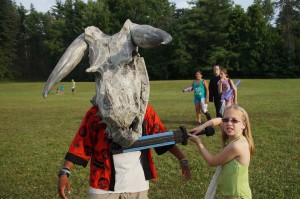
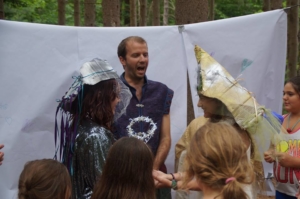
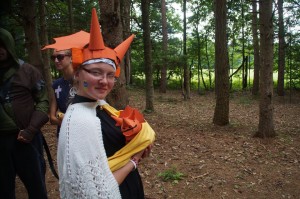

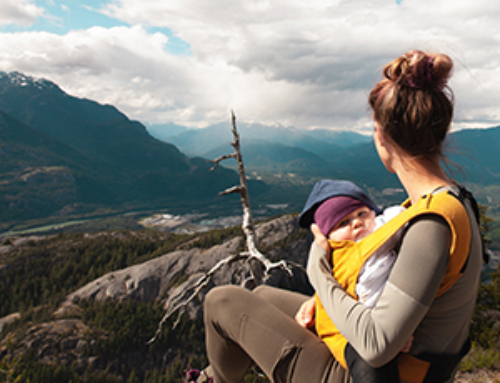



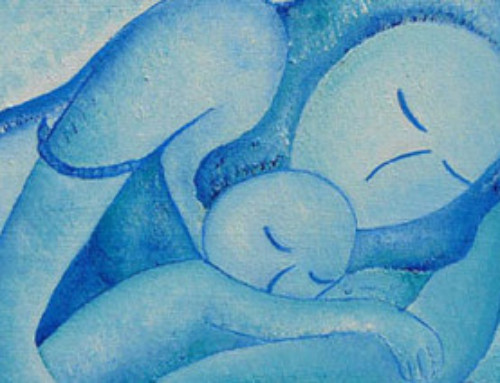
[…] Evolutionary Parenting heeft een mooie gastblog over andere manieren van omgaan met kinderen in groepen, zonder straffen, maar met afspraken, overleg, eigen verantwoordleijkheid en keuzes. Guest Post: The “Secret Sauce” for Peaceful Communities | Evolutionary Parenting | Where History…. […]
[…] בשביל לקרוא את המאמר המקורי, תלחצו כאן. […]
I think this is an excellent article. The biggest issue is that kids lack choice in two main areas- home and school. considering the rates that parents spank, yell and shame their own children, and the children have no recourse really it is hard to see this getting better. Then you add on the shoved in a classroom craziness of schools we can see the challenges we face as a society.
I love the understanding of this article of he “roots” of why people choose to stay or engage in troublesome relationships they can easily walk away from but these roots often stay strong. I see this all the time when children who had toxic parents or relatives seem almost hooked to them like a ball and chain and will continue to subject themselves to more abuse as adults.
[…] Guest Post: The “Secret Sauce” for Peaceful Communities | Evolutionary Parenting | Where History…. […]
What a wonderful camp experience you are creating!
I love that you point out the “that’s not how it works in the real world” fallacy. We so often use that excuse to justify inflicting unnecessary pain on children.